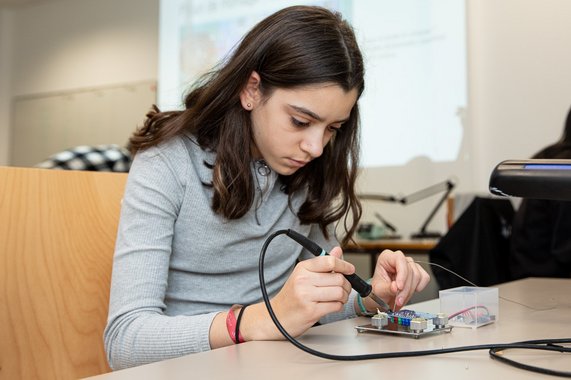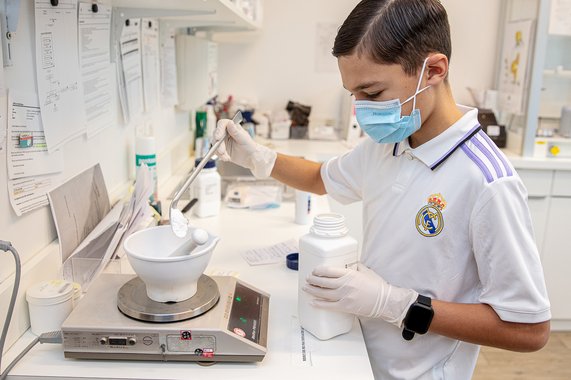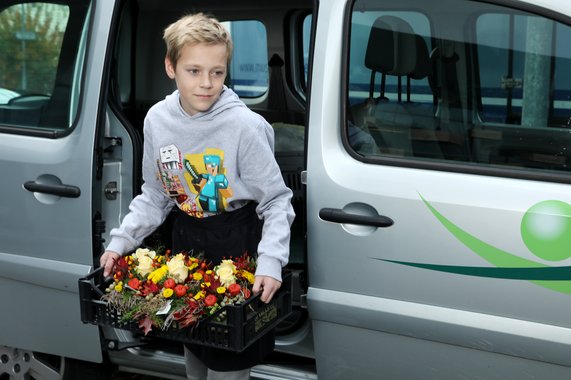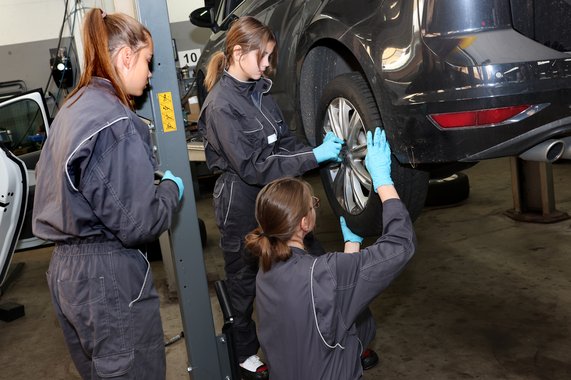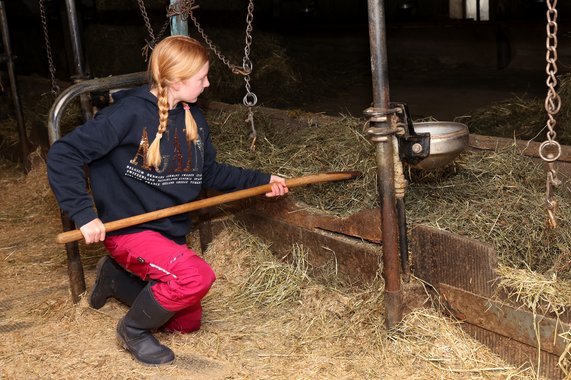Translated with DeepL
The interview was conducted by Ester Elices
Isabelle Santamaria, the National Future Day was initiated in 2001 as part of the 16+ apprenticeship project by the Swiss Conference of Gender Equality Officers. How has it developed over the years?
Isabelle Santamaria: National Future Day was originally conceived as a ‘daughter's day’ to give girls the opportunity to get a taste of professions that are traditionally dominated by men. In the meantime, Future Day has developed into an event that involves and appeals to all genders. It has become an institution that has become an integral part of the Swiss school calendar.
Certainly, the opening of Future Day to boys and the introduction of specific programmes to encourage them to get to know professional fields that are considered more ‘typical for women’. In line with the motto ‘Changing sides’, boys accompany a specialist from a care and health profession or from the field of social work; girls accompany a specialist from IT, technology or construction and engineering. This supports comprehensive gender equality and broadens the career choice horizons for all children.
We have launched special programmes such as ‘Mädchen-Technik-los!’ and ‘Mädchen-Informatik-los!’, which aim to introduce young women to technical and scientific careers. We also work closely with schools and companies to encourage girls to take advantage of these opportunities, not least because meeting female role models in these fields of work can be a decisive factor. As I said, the aim of the Future Day is to familiarise girls with professions that they might not have considered before.
It is a valuable addition to our own initiatives and is therefore very important to us. The number of girls we can refer to the mentoring programme is around 1,800 each year. Through the partnership with ‘Swiss TecLadies’, we are able to expand the girls' career opportunities, encourage them in their technical and professional careers and offer them long-term support.
Yes, we have received a lot of positive feedback from former participants. One girl, for example, decided to study mechanical engineering after her Future Day at an engineering company. Another example is a boy who, after gaining an insight into the nursing profession, began training as a nurse. These stories show that Future Day plays an important role in broadening young people's horizons and showing them new career prospects.
We coordinate our planning with schools to ensure that the day is optimally integrated into the school calendar and that teachers and students are well informed about it. On our website, teachers can find comprehensive materials for preparing for and following up on Future Day. Together with companies, we develop interesting and educational programmes that offer students practical insights into various professions. We have also put together specific training courses and materials for companies to help them prepare for and organise Future Day.
We continuously develop the special projects and ensure that attractive programmes are available for all target groups. We also carry out regular evaluations and feedback rounds to ensure that the needs and interests of both genders are taken into account. Last but not least, we also work closely with schools and companies to ensure balanced participation.
One of the biggest challenges is to ensure that the ‘change of sides’ is widely communicated and implemented. Many people, parents and teachers alike, do not realise how gender-segregated career choices still are. For example, women make up less than 10% of entrants in the fields of IT, engineering and technology, while men make up less than 15% of entrants in the social and healthcare sectors. It is therefore important to emphasise that ‘Changing Sides’ helps to broaden young people's career horizons by allowing them to discover professions and activities in which their gender is underrepresented. In this respect, Future Day is not a normal career taster day. Companies also need to be convinced that it is worthwhile for them to take part in Future Day and that they see their involvement as an investment in their own future. By taking part, they can draw attention to themselves and attract new skilled workers. Gender-mixed teams have been proven to work more productively and creatively, which represents considerable added value for companies.
This is another important aspect, as this cooperation is central to the success of the Future Day. Professional associations can help to mobilise companies and communicate the importance of ‘changing sides’ and thus of cross-gender career choices. Professional organisations also play a key role in increasing the reach and acceptance of Future Day and supporting its long-term goals.
I continue to see National Future Day as a key initiative for promoting gender-independent career choices and supporting gender equality in the world of work. In the future, we want to integrate the Future Day even more strongly into the educational landscape and further expand our programmes in order to offer even more pupils the opportunity to discover gender-atypical professions and activities. Another goal is to make the Future Day more sustainable by transferring more students to follow-up projects to support their professional development in the long term.
